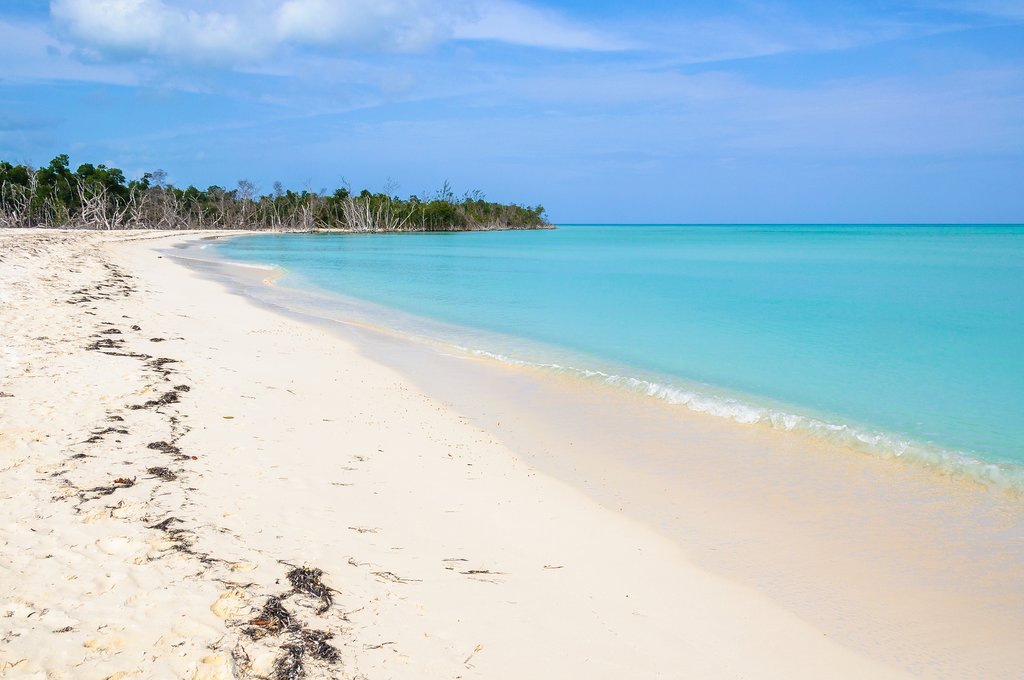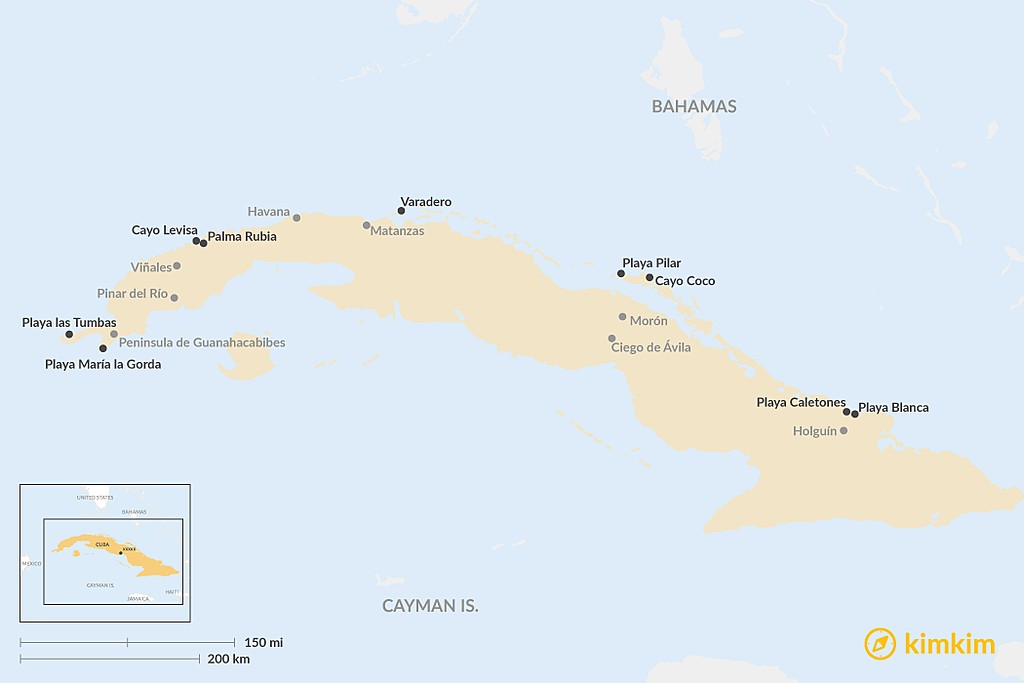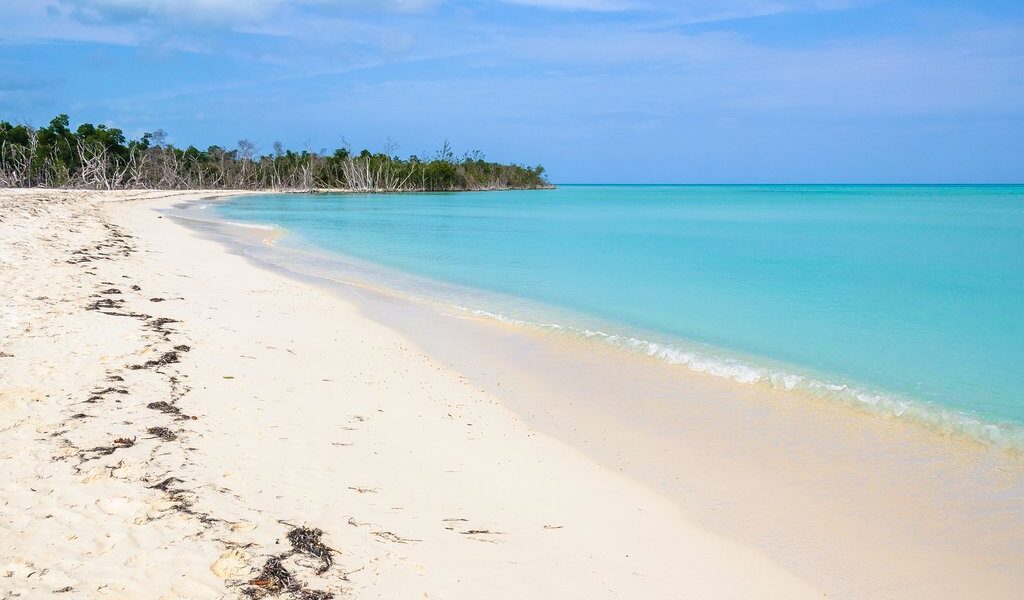
The island of Cuba is lined with white sandy beaches and surrounded by turquoise Caribbean waters. But it takes a little effort — and some dedicated travel planning — to break away from the crowds and find your own slice of paradise. Follow this handy guide to the best beaches in Cuba and you’ll be relaxing under a palm tree in no time.
## A Deeper Dive into Cuba’s Coastal Charms
Cuba, an island nation steeped in history and vibrant culture, offers an unparalleled experience for travelers seeking sun-kissed shores. The country is generously fringed with captivating stretches of sandy beach, remarkable for their untouched beauty and the relative absence of large-scale development seen in other Caribbean destinations. These pristine sands and crystal-clear waters present incredible opportunities for snorkeling enthusiasts, diving aficionados, sailing adventurers, or those who simply wish to relax under the warm Cuban sun with a refreshing drink in hand.
However, prospective travelers should be aware that navigating the logistical intricacies of Cuba can present certain challenges. One might find the lack of comprehensive signage a notable issue when opting for self-driving adventures. While public transportation effectively connects major cities in Cuba, its reach to many of the breathtaking coastal destinations is more limited. This aspect can make reaching some of the island’s most enchanting beaches somewhat difficult. Accessing these coastal paradises typically involves a few distinct options: participating in organized tours, renting a car (which can be a comparatively expensive choice), hiring taxis (often the priciest option), or embracing the physically engaging option of traveling by bicycle. Each choice offers a different experience and necessitates consideration based on budget and personal preferences.
## Unveiling the Coastal Gems:
Let’s explore some of Cuba’s most alluring beach destinations, each boasting a unique character and charm:
### Varadero, Matanzas province: An Exception to the Rule
In the diverse tapestry of Cuba, **Varadero** stands apart as a distinct exception. Historically, access to Varadero was restricted for Cubans unless they were employed within the resort’s hotels. While these regulations have since been modified, the area maintains its position as Cuba’s foremost tourist hub. An impressive collection of upscale hotels graces a peninsula, flanked by immaculately maintained sandy beaches on both sides. Here, visitors will find a comprehensive range of modern amenities and conveniences, from globally inspired restaurants to diverse souvenir shops and a vast array of water sports activities. As a result, **Varadero** attracts a considerable number of visitors. Many tourists who visit Cuba choose to confine their stay solely to Varadero. In spite of its broad appeal, **Varadero** remains an anomaly, as the beach experiences offered in other parts of Cuba diverge significantly.
**Getting There:**
Conveniently, a direct Víazul bus service connects **Havana** to **Varadero**, offering a straightforward transportation option.
**Expert Tip:**
Choosing to stay in **Varadero** doesn’t preclude you from experiencing the authentic essence of Cuba. **Matanzas**, a charming and revitalized old port city, is within easy reach for a day trip. Moreover, the surrounding area is dotted with numerous cave systems, some of which feature inviting swimming holes, adding a touch of adventure to your exploration.
### Cayo Levisa, Pinar del Río province: A Secluded Island Escape
**Cayo Levisa**, a captivating *cayo* (cay, or small sandy isle), distinguishes itself from many other cayos off Cuba’s northern coastline by its lack of a direct connection to the mainland. Reaching this tranquil haven requires a 30-minute boat journey, and the sense of seclusion bestowed upon the island’s beaches by this voyage is truly exceptional. Many visitors opt to stay at **Cayo Levisa’s** comfortable hotel, enjoying a respite from the daytime influx of day-trippers. Scuba diving is a popular activity here, with the marina organizing excursions to several exceptional dive sites. Kayaks are also available for rent. Otherwise, the essence of the cayo revolves around the simple pleasures of sun, sand, and swaying palm trees. Finding your own private swimming spot is effortlessly achievable.
**Getting There:**
Begin with a Víazul bus to **Viñales**, then transfer to a tourist bus headed to **Palma Rubia** (the same bus is utilized by both day-trippers and overnight hotel guests). Finally, take a boat from **Palma Rubia** to **Cayo Levisa**.
**Expert Tip:**
The road leading past the **Cayo Levisa** turn-off from **Viñales** traces the northern coastline of the **Pinar del Río** and **Artemisa** provinces. This route unveils a multitude of remote, sandy beaches seldom encountered by international tourists. Cycling is a favored mode of transport along this road, thanks to its minimal traffic.
### Playa María la Gorda, Pinar del Río province: A Diver’s Paradise
**Playa María la Gorda** serves as the primary attraction on the otherwise untamed and sparsely visited **Peninsula de Guanahacabibes**, a national park that stretches along a snaking spit of land resembling the form of a high-heeled shoe on Cuba’s westernmost edge. The beach at **María la Gorda** is undeniably beautiful: picture an extensive stretch of white-blonde sand, generously dotted with palm trees, and complemented by a relaxed hotel and bar nearby. However, the main draw for visiting this area lies in its exceptional diving opportunities. Mainland Cuba’s premier diving sites are located here, with drop-offs and reefs just a short distance offshore. The facilities at the marina are superior to those found elsewhere on the island.
**Getting There:**
Travel by Víazul bus to **Pinar del Río**, then transfer to a tourist bus or taxi to **Playa María la Gorda**.
**Expert Tip:**
**Playa María la Gorda** constitutes only the tip of a vast national park occupying the far western reaches of the Cuban mainland. **Playa las Tumbas**, situated near Cuba’s westernmost point, about 16 miles west of **Playa María la Gorda**, presents an even more idyllic beach setting, complete with a villa available for accommodation.
### Playa Pilar, Ciego de Ávila province: Powder-Soft Sands
Locals often remark that the sand on **Playa Pilar** is so exquisitely fine that it slips away the instant you attempt to sift it through your fingers. Backed by picturesque dunes, this tranquil crescent of beach graces the northern coast of **Ciego de Ávila** province, situated on a cayo brought to prominence by Ernest Hemingway in his celebrated novel, *Islands in the Stream*. **Cayo Coco**, which serves as the gateway to **Cayo Guillermo**, offers an abundance of hotels. However, at **Playa Pilar**, the available amenities are limited to a restaurant and a small marina offering a modest selection of water sports. This is perfectly acceptable, as sunbathing and swimming constitute the primary activities here.
**Getting There:**
Take a Víazul bus to **Ciego de Ávila**, then transfer to a train or taxi to **Morón**, followed by a taxi to **Cayo Coco**, and finally, a taxi or hotel shuttle to **Playa Pilar**. Alternatively, consider a flight from **Havana** to **Cayo Coco** and then a taxi or hotel shuttle to **Playa Pilar**.
**Expert Tip:**
If you’re lodging on **Cayo Guillermo**, reaching **Playa Pilar** is feasible by foot. A stunning 4-mile hike along the beach offers a memorable experience.
### Playa Caletones, Holguín province: A Secret Coastal Paradise
**Playa Caletones**, a hidden gem in **Holguín** province, remains largely unknown to both international tourists and many Cubans, offering a serene alternative to the bustling atmosphere of **Varadero**. Its relative obscurity is unlikely to change in the near future. The journey to reach **Playa Caletones**, starting with the ascent to the burgeoning fishing port of **Gibara**, followed by a picturesque drive along the rugged coastline for about 10 miles to the west, is remarkable but largely overlooked by large tour operators. Upon arrival, you’ll encounter a sparsely populated hamlet, a low-key beach bar, and seemingly endless stretches of captivating coastline, including the pale curve of sand that defines **Playa Caletones** itself. Beyond the main beach, there are also *pozas* (natural bathing pools) tucked away from the shore. Further along the coast, opportunities for cave exploration await.
**Getting There:**
Travel by Víazul bus to **Holguín**, then take a local bus or taxi to **Gibara**, and finally, a local car or motorcycle to **Playa Caletones**.
**Expert Tip:**
**Gibara** serves as an excellent base for immersing yourself in relaxed seaside life, Cuban-style. The town now proudly boasts a beautifully renovated hotel, as well as several excellent *casas particulares* (locally run bed and breakfasts). Consider a ferry trip from **Gibara** across to **Playa Blanca**, another inviting beach easily visible across the bay from town.

B-668

